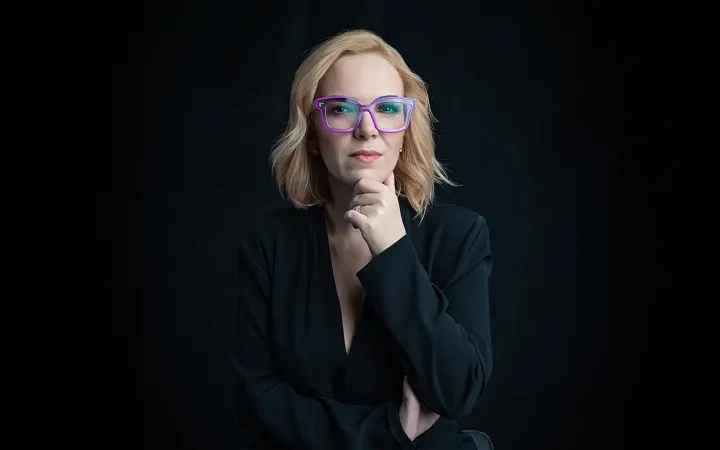
Por Adriana García

Soy, orgullosamente, de uno de los municipios con menor población del estado de Jalisco, México. Una de las grandes ventajas de crecer en un pueblo tan pequeño, además de disfrutar de mucha tranquilidad y respirar aire puro, es la cercanía entre las personas. Me encanta poder saludar por su nombre a alguien que me cruza por la calle y poder contarle a mi esposo algo de esa persona, un poco de su historia o de su familia.
En dicho contexto, tuve la fortuna de conocer aún más de cerca a muchas personas porque desde pequeña ayudé a mi mamá en su “tienda de la esquina” (un formato habitual en México que suele incluir tienda de abarrotes, farmacia, regalos, papelería y más). Ahí conocí de primera mano historias increíbles, muchas de ellas de mujeres emprendedoras.
Naturalmente, la primera historia de una mujer emprendedora que conocí fue la de mi mamá, una médico cirujana y partera con espíritu de comerciante. Este espíritu permeó en mi familia: mi hermana menor se convirtió en una exitosa emprendedora con dos tiendas de productos de belleza, y mi cuñada abrió su propia tienda de abarrotes y su estética.
Son muchos los nombres de mujeres que desfilan ahora mismo en mi cabeza al intentar recordar a las emprendedoras que conocí en aquella tienda. Sarita, la señora que iba por papas y col para vender por las noches los mejores tacos dorados que he probado; Chela, la señora que iba por cierres, hilos y agujas para su taller de costura; Mari, la señora que iba por limones y sal para ofrecerlos con sus elotes asados en la plaza; doña Lucía, la señora que iba por leche, azúcar y vainilla para vender hielitos (helados en bolsitas de plástico) en su casa. También conocí a otras mujeres que tenían un negocio de renta de películas (en tiempos en que accedíamos a contenidos multimedia a través de VHS y DVD) y una mina de piedra.
Aunque son pocos los emprendimientos femeninos que he visto expandirse, la mayoría de ellos han sobrevivido y se han fortalecido con el transcurso de los años. Y aunque son pequeños negocios, para estas mujeres representan una fuente importante de ingresos para sus familias, fuentes de empleo para otras mujeres y, sobre todo, una forma de independencia y libertad para ellas mismas.
Tal vez se preguntarán cómo iniciaron y cómo se han desarrollado estos negocios. Muchas de ellas, recibieron el capital semilla de un familiar, generalmente, su mamá. Otras de ellas comenzaron con el dinero de las remesas que enviaron sus familiares de Estados Unidos o Canadá. Otras, como fue el caso de Chela, se beneficiaron de programas del Gobierno para equipar su taller de costura y darle empleo a sus hermanas. La mayoría, sin embargo, recurrieron a las tandas, también conocidas como “cundinas”. Y son pocos casos, como la dueña de la mina de piedra, que obtuvieron préstamos bancarios.
Los préstamos bancarios son menos populares entre las mujeres emprendedoras en el contexto que describo por tres causas principales. Primero, porque en mi pueblo no había sucursales bancarias hasta hace un año, cuando llegó el Banco del Bienestar; el banco comercial más cercano está a 20 minutos de distancia, en el pueblo vecino. Muchas de estas mujeres no saben manejar, no tienen carro y no hay transporte público para conectar estos pueblos, por lo que tendrían que pagar un taxi (relativamente caro) para desplazarse. Segundo, porque incluso para quienes sí pueden ir con facilidad al otro pueblo, es muy probable que dichas mujeres no cumplan con los requisitos para obtener un préstamo. Dentro de los muchos obstáculos a los que se pueden enfrentar, me temo que el más importante es que no poseen una garantía (propiedad o bien material a su nombre) para presentar ante la institución. Tercero, porque aunque pudieran desplazarse y presentar garantías, las mujeres emprendedoras en dicho contexto tienen desconfianza, miedo y desinformación sobre los bancos, así como los productos y servicios que ofrecen. Tienen mucha influencia entre ellas las historias sobre estafas telefónicas de quienes se hacen pasar por empleados de bancos o historias de malas experiencias vividas de primera mano.
Por ende, no es casualidad que la familia y las ya mencionadas tandas sean la principal fuente de recursos para las mujeres. En un pueblo pequeño, la red de apoyo constituida por la familia, amigas y vecinas es muy importante para el funcionamiento de la vida diaria, incluyendo el negocio. Se basan en la confianza, pero las tandas específicamente tienen dos componentes adicionales que las hacen funcionar de manera exitosa: la presión social y la reputación. Al reunirse un grupo de mujeres y hacer una aportación recurrente de una cantidad fija de dinero cada determinado tiempo, existe el riesgo de que una de ellas incumpla. Sin embargo, la líder es responsable de elegir cuidadosamente quién entra en el grupo para disminuir dicho riesgo. La historia que precede a cada mujer y a su familia son una herramienta poderosa de inclusión o exclusión en las tandas. Cuidar la reputación es un excelente motor de cumplimiento, y la presión social se vuelve un arma poderosa en caso de incumplimiento.
Con todo esto, no pretendo decir que una forma de iniciar y llevar un emprendimiento liderado por mujeres en dichos contextos sea mejor que otra. Simplemente comparto estas historias vistas con los lentes que llevo puestos. También, deseo profundamente continuar compartiendo más historias de mujeres cada vez con más y mejores oportunidades para emprender, para que puedan ser cada vez más independientes y libres.
* Adriana García es profesora investigadora del FAIR Center y del Grupo de Investigación en Área Temática en Innovación Financiera de la Escuela de Negocios del Tecnológico de Monterrey. Miembro del Sistema Nacional de Investigadores Nivel I y ha realizado investigación sobre el impacto social de las microfinanzas en Bolivia y África. Su trabajo ha alcanzado publicaciones en libros y artículos en revistas científicas de prestigio y ha participado en conferencias internacionales en Francia, Estados Unidos, Bolivia y la Universidad de Oxford.
Las opiniones expresadas son responsabilidad de sus autoras y son absolutamente independientes a la postura y línea editorial de Opinión 51.





Comments ()